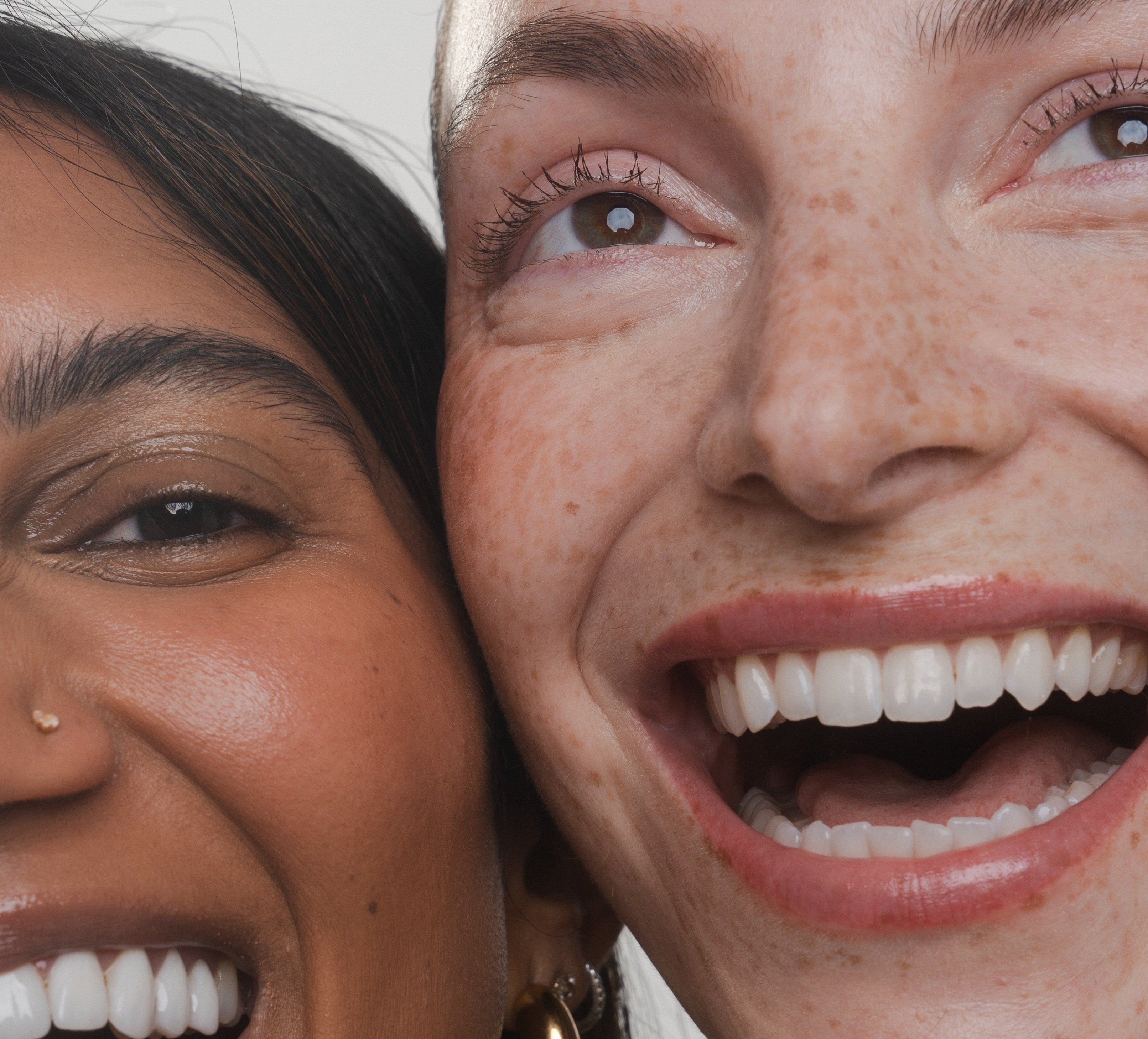What is the Skin Microbiome?



Cart (0)
Your cart is empty
Continue ShoppingNov 22, 2024
What is the Skin Microbiome?
The skin microbiome is a vast, invisible ecosystem of microorganisms, including bacteria, fungi, viruses, and other microbes, that live on your skin’s surface. This diverse community is present across different parts of your skin—varying between moist, dry, and oily areas—each with its unique microbial makeup. While we often think of these organisms as "germs," they are essential to our health.

Contents of this article
Key takeaways from this article
- The skin microbiome is a living ecosystem of trillions of bacteria, fungi, and viruses on your skin, essential for protection, hydration, and soothing inflammation.
- Your skin microbiome is uniquely yours, shaped by your lifestyle, environment, and genetics, much like a fingerprint.
- Only 43 percent of your body’s cells are human, highlighting the crucial role of your skin microbiome in maintaining health and resilience.
- A balanced skin microbiome helps protect against sensitivity, dryness, and breakouts by maintaining hydration and defending against harmful invaders.
What is the Skin Microbiome?
The skin microbiome is a vast, invisible ecosystem of microorganisms, including bacteria, fungi, viruses, and other microbes, that live on your skin’s surface. This diverse community is present across different parts of your skin—varying between moist, dry, and oily areas—each with its unique microbial makeup. While we often think of these organisms as "germs," they are essential to our health. They play a protective role, help in immune function, and even impact skin conditions like sensitivity, dryness, and breakouts. Without these tiny allies, our skin would be more vulnerable to harmful invaders and environmental stressors.
Scientists now recognize the skin microbiome as a dynamic partner in skin health rather than a passive inhabitant. It evolves with your age, diet, and even your geographic location. From birth, your skin microbiome begins to develop, with microbes passed on from both your mother and father. These initial microbial communities are influenced by close contact, nurturing, and early exposure to the environment, laying the foundation for your skin’s unique microbial identity.
Your Skin’s Unique Microbial Identity
Just as no two people have identical fingerprints, no two people share the same skin microbiome. Though you might share 99.9% of your genes with other humans, only about 20-30% of your microbiome is similar to that of others. This microbial uniqueness forms a natural shield that adapts to your lifestyle, diet, environment, and genetics.
Interestingly, different regions of your body have their own microbial "ecosystems." The microbes on your hands are different from those on your face or feet because they are tailored to the specific conditions of that area—whether it's exposed to air, covered in clothing, or rich in sebaceous glands. In essence, your skin’s microbes have "chosen" you, creating a personalized layer of protection that evolves over time and adapts to your habits and surroundings.
You Are More Than Just You
Your skin microbiome is part of a bigger story. Surprisingly, only 43% of the cells in your body are human—the rest are microbial! Around 1,000,000,000,000 (one trillion) microbes inhabit your skin, forming a vital and intricate ecosystem. This dynamic environment communicates with your body through chemical signals, helping to regulate your immune system, fend off harmful invaders, and influence how your skin responds to external factors such as products and environmental stressors.
Each microbial community works in harmony to maintain balance, but this equilibrium is delicate. Environmental factors, lifestyle changes, and even the skincare products you use can disrupt the microbiome, sometimes weakening its ability to protect and support your skin effectively.

Why Balance in the Skin Microbiome Is Important
When your skin’s ecosystem is balanced, these microbes work together to defend against invaders, soothe inflammation, and maintain hydration. This balance ensures that beneficial microbes thrive, leaving less room for harmful bacteria to grow. However, the modern world introduces challenges to this balance.
Factors like over-washing, pollution, harsh skincare products, and stress can disrupt the microbiome, weakening its defenses. Overuse of antibacterial soaps and cleansers, for example, can strip your skin of both harmful and beneficial microbes, leaving it more vulnerable to irritation and sensitivity.
Maintaining balance in the skin microbiome is key to resilience. A balanced microbiome not only supports the skin’s natural barrier but also contributes to its ability to adapt to daily challenges. This adaptability is crucial for managing dryness, reducing breakouts, and even addressing visible signs of aging.
In Summary
The skin microbiome is a diverse community of organisms essential for skin health. With trillions of unique microorganisms, it forms a protective barrier that adapts to daily challenges, contributing to your skin’s overall appearance and resilience.

Hydrolytic® Serum
Lightweight anti-aging treatment
Skin Microbiome FAQs
What is a microbe?
A microbe is a microscopic organism, such as bacteria, fungi, or viruses, that plays a vital role in protecting and supporting your skin's health.
What are microorganisms?
Microorganisms are tiny living beings, including bacteria, fungi, and viruses, that make up the skin microbiome and contribute to its balance.
How do microbes protect the skin?
Microbes create a natural barrier that defends against harmful bacteria, reduces inflammation, and maintains hydration.
What does it mean when the skin microbiome is unbalanced?
An unbalanced microbiome occurs when harmful microbes outnumber beneficial ones, leading to skin issues like sensitivity, dryness, or breakouts.
Why do modern lifestyles affect the skin microbiome?
Pollution, harsh skincare products, over-cleansing, and stress can disrupt the natural balance of skin microbes, weakening the skin's defenses.
How do microbes "communicate" with the body?
Microbes send chemical signals to the skin and immune system, helping to regulate inflammation and maintain a healthy balance.
Why are only 43 percent of my cells human?
The remaining 57 percent are microbial cells that form ecosystems like the skin microbiome, working with your body to support health and balance.
Can the number of microbes on my skin change?
Yes, your skin’s microbial population can fluctuate based on your environment, lifestyle, and the skincare products you use.
How can I tell if my skin microbiome is unbalanced?
Signs include heightened sensitivity, redness, dryness, premature ageing or frequent issues like breakouts or irritation.
Authors

Written by William Smithwite
Co-founder of fjör & Skin Microbiome Expert

Reviewed by Natalie Enslöw
Founder & CEO of fjör
References
- Byrd, A., Belkaid, Y. & Segre, J. The human skin microbiome. Nat Rev Microbiol 16, 143–155 (2018). https://doi.org/10.1038/nrmicro.2017.157
- Sender R, Fuchs S, Milo R. Revised Estimates for the Number of Human and Bacteria Cells in the Body. PLoS Biol. 2016 Aug 19;14(8):e1002533. doi: 10.1371/journal.pbio.1002533. PMID: 27541692; PMCID: PMC4991899.
Contents of this article
- What is the Skin Microbiome?
- Your Skin’s Unique Microbial Identity
- You Are More Than Just You
- Why Balance in the Skin Microbiome Is Important
- In Summary
- Hydrolytic® Serum 30ml
- Skin Microbiome FAQs
Authors

Written by William Smithwite
Co-founder of fjör & Skin Microbiome Expert

Reviewed by Natalie Enslöw
Founder & CEO of fjör


